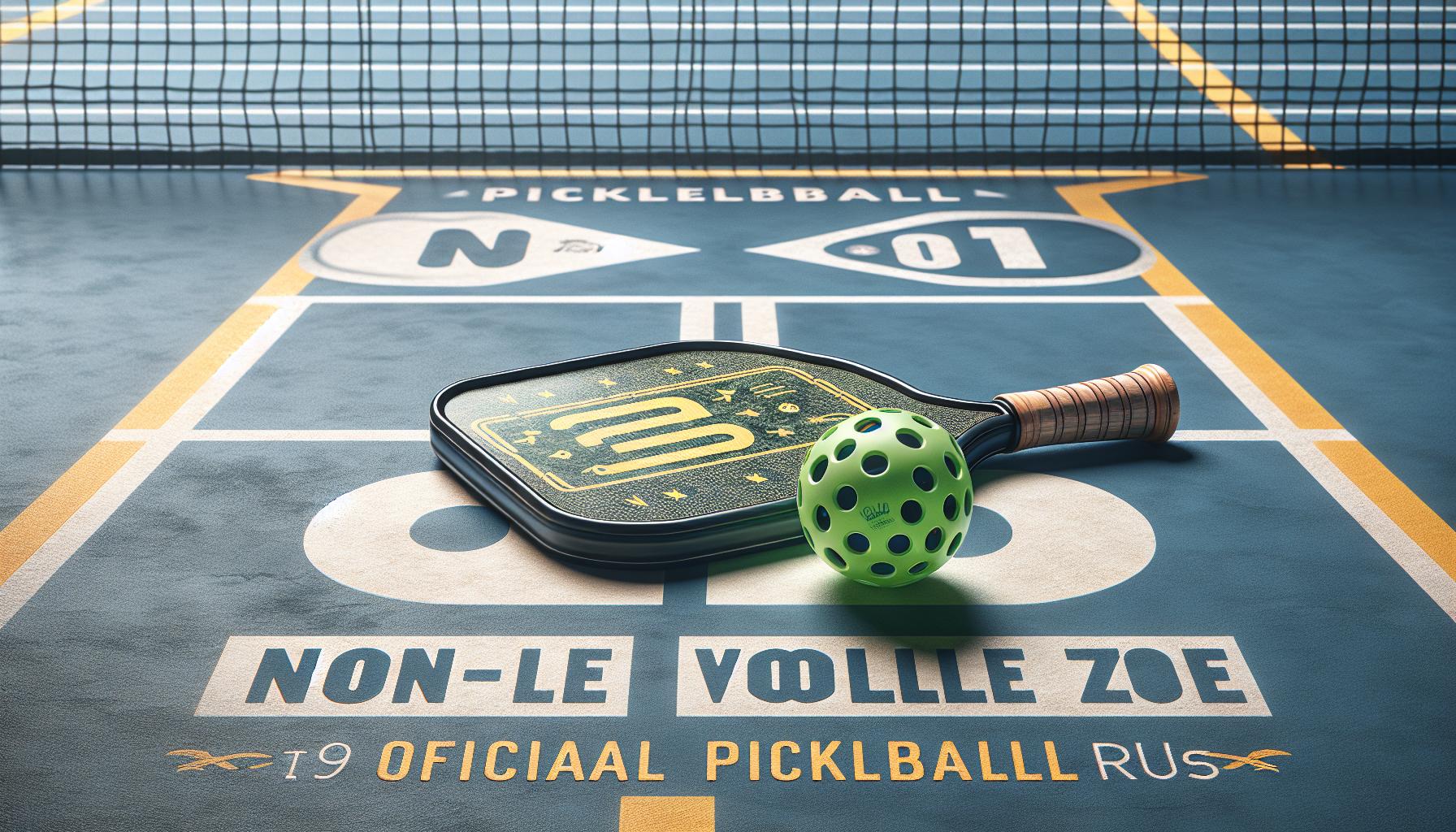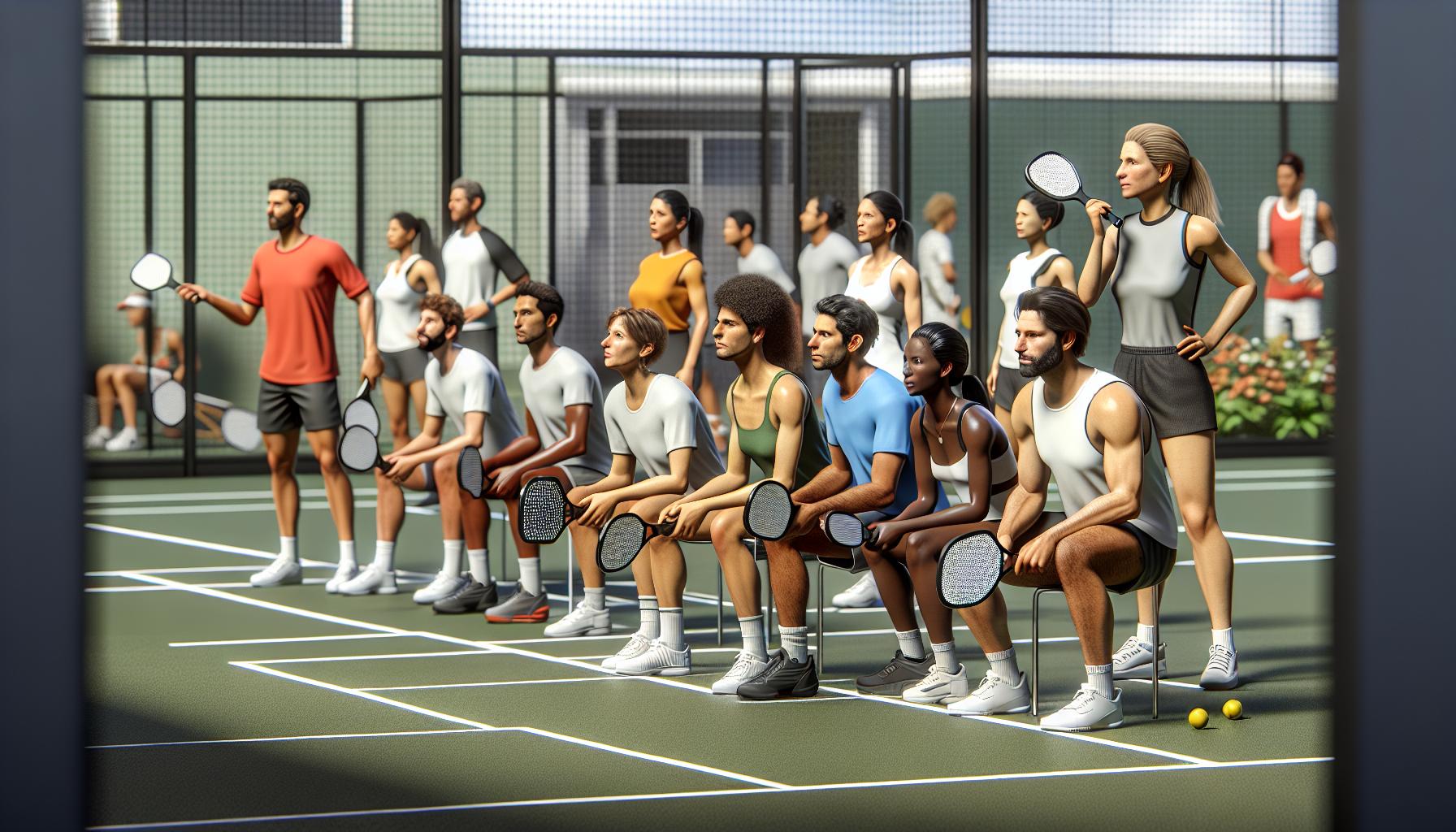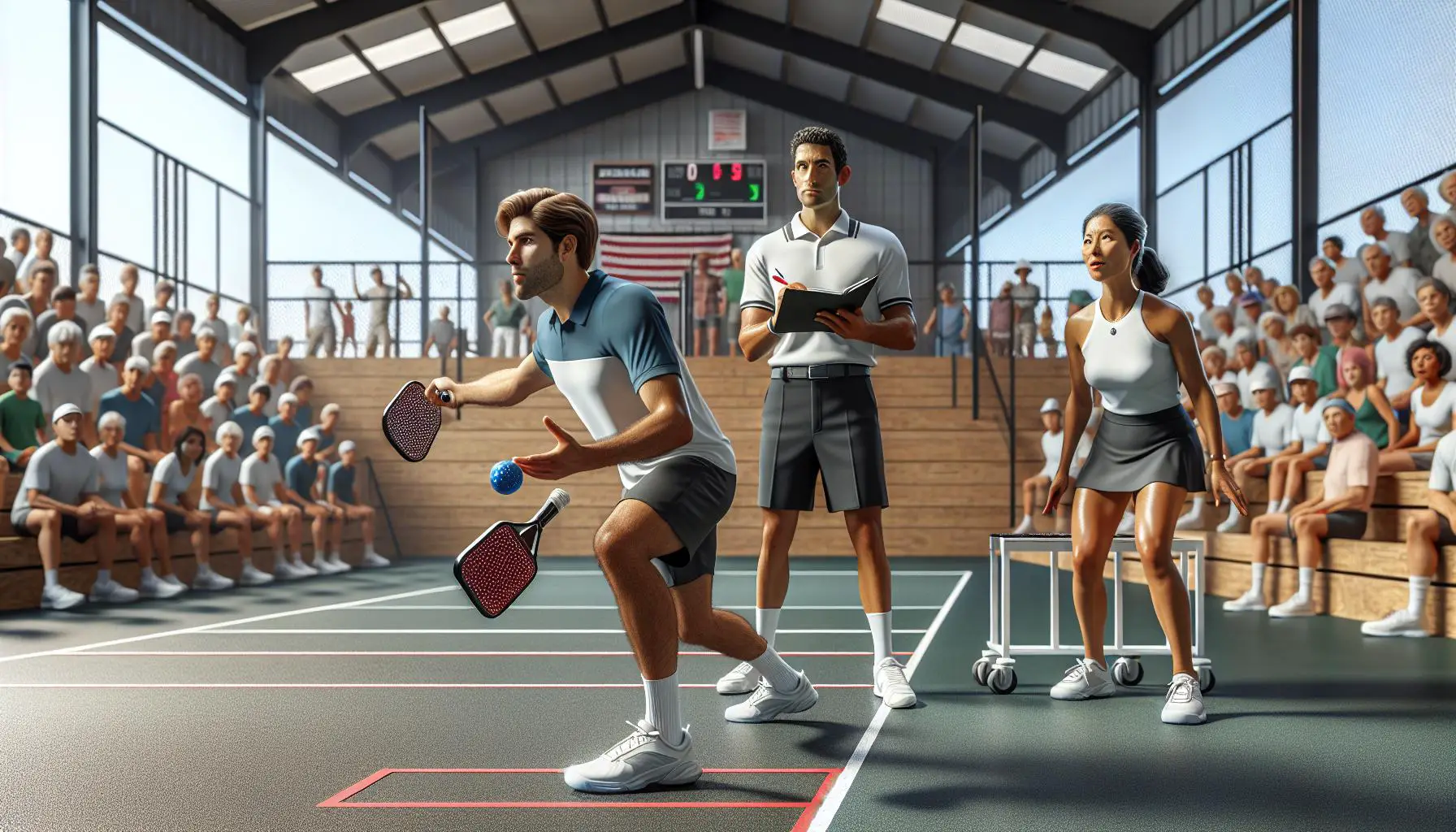Pickleball’s popularity has skyrocketed, making it one of the fastest-growing sports in the US. With its increasing fan base, the sport’s governing bodies regularly update the rulebook to keep the game fair, competitive, and fun. These annual adjustments ensure pickleball remains accessible and enjoyable for players of all skill levels.
As the new year rolls in, so do the latest changes to the official pickleball rules. Whether you’re a seasoned pro or just picking up a paddle, staying informed about these updates is crucial. They can affect gameplay, strategy, and even the outcome of your matches. Let’s dive into what’s new and how it might change the way you play.
Evolution of Pickleball Rules
Pickleball has seen a remarkable evolution since its inception in the mid-1960s. What started as a backyard pastime has transformed into a sport with a formalized set of rules and a governing body, the USA Pickleball Association (USAPA), dedicated to promoting its growth worldwide. This transformation has been fueled by the sport’s soaring popularity and the diversity of its players, ranging from casual enthusiasts to professional athletes.
In the early days, pickleball rules were informal, mainly because the creators of the game prioritized fun and family entertainment over competition. However, as pickleball began to gain momentum, the need for standardized rules became apparent. The first rulebook was a simple document focusing on the basics of gameplay, equipment, and court dimensions. These rules laid the groundwork for what pickleball would become, but they were just the beginning.
Over the years, the rulebook has undergone numerous updates to address the evolving needs of the sport. Key areas of focus have included player safety, equipment specifications, and match fairness. For instance, the introduction of the non-volley zone, also known as the “kitchen,” aimed to prevent injuries by discouraging players from executing powerful smashes at close range. Similarly, equipment rules have been updated to maintain a balance between technological advancements and the skill-based nature of the game.
Another significant change has been the adoption of a standardized scoring system. While initially, players experimented with various scoring methods, the importance of having a uniform system for competitive play became evident. This evolution has not only made the game more accessible to newcomers but also facilitated its inclusion in organized sports clubs and tournaments.
The most recent updates to the pickleball rulebook reflect the sport’s dynamic nature. Changes often arise from player feedback, competition observations, and the inherent desire to continually improve the game. Adjustments to serve mechanics, fault calls, and the introduction of new player positions are just a few examples of how the rules have adapted. The USAPA’s commitment to an annual review process ensures that the sport remains contemporary, challenging, and enjoyable for all involved.
Importance of Staying Updated

In the fast-evolving landscape of pickleball, staying abreast of the latest rule changes is not just beneficial—it’s crucial for players, coaches, and enthusiasts alike. As this sport continues its meteoric rise in popularity, the governing bodies, primarily the USA Pickleball Association (USAPA), work tirelessly to ensure the game remains safe, competitive, and enjoyable for everyone involved. They achieve this by periodically reviewing and updating the official rulebook, a practice that reflects the dynamic nature of pickleball and its community.
One of the primary reasons to stay updated with the official pickleball rules is to maintain a level playing field. With each update, nuances and clarifications are added to prevent misunderstandings and disputes during matches. These refinements help preserve the integrity of the game and ensure that competition is fair, regardless of whether it’s a friendly match in a local community center or a high-stakes tournament on the national stage.
Moreover, knowledge of the latest rules is paramount for player safety and well-being. As pickleball strategy evolves and players adopt new techniques, the USAPA sometimes modifies rules to minimize the risk of injury. For instance, adjustments to service rules or specifications for equipment are often made with player safety in mind. Being informed about these changes can significantly reduce the chance of accidents and injuries on the court.
For those actively competing or considering competition, understanding the most recent rulebook is essential. Tournaments and leagues typically adhere to the USAPA’s official rules, and even minor misunderstandings can have significant repercussions, including penalties or disqualification. Thus, for competitive players, staying informed is not just a matter of etiquette; it’s a strategic necessity.
Additionally, for coaches and instructors, being up-to-date with the rule changes is vital. It enables them to offer accurate guidance, strategy, and feedback to their players. By being knowledgeable about the rules, coaches can help their players adapt their play style and strategy accordingly, providing a competitive edge.
Furthermore, the ongoing dialogue between the pickleball community and its governing bodies implies that changes to the rules often reflect the community’s feedback and emerging trends in the sport. Engaging with these updates can offer players and enthusiasts insight into the direction in which pickleball is heading and how it’s evolving to suit its growing base of participants.
Key Changes for the Year

The process of updating pickleball rules is meticulous, aimed at refining the game while addressing the concerns and suggestions from the community. For the current year, several key changes have been instituted, reflecting the sport’s evolving dynamics. These updates are pivotal for everyone involved, from casual players to professional athletes, to grasp for a better gameplay experience.
One significant adjustment addresses the serve. Players must now serve diagonally across the court, ensuring the ball lands within the confines of the opposite diagonal service court. This rule intends to standardize serve techniques and minimize disputes during matches.
Another area of revision involves the Non-Volley Zone or the kitchen. Players are prohibited from executing a volley while standing within this zone, a rule modification aimed at promoting fairness and strategic play. Previously, certain ambiguities about player positions and momentum led to confusion, but the latest revision clarifies that any part of a player’s body touching the zone during the volley is a fault.
| Rule Category | Description of Change |
|---|---|
| Serve | Mandatory diagonal serves to the opposite court. |
| Non-Volley Zone Rules | Clarified rules regarding player’s position and momentum in the kitchen. |
Additionally, the equipment regulations have been tightened. Paddles and balls must meet stricter criteria, ensuring that no player gains an unfair advantage due to non-standard equipment. The guidelines now specify acceptable materials, sizes, and weight for all equipment, aiming to maintain the game’s integrity.
Player conduct has also undergone scrutiny. The updated rules emphasize sportsmanship and respect among players, officials, and spectators. Penalties for unsportsmanlike behavior have been detailed more thoroughly, highlighting the importance of maintaining a positive environment during competitions.
Further modifications touch on scoring, with a streamlined process for starting games and a clearer framework for disputes. Players are encouraged to familiarise themselves with these changes, as they fundamentally affect gameplay and competitive strategies.
These updates, while appearing nuanced, serve as testament to the sport’s growth and the community’s active engagement in its development. Players, coaches, and enthusiasts are urged to review the Official Rulebook for a comprehensive understanding of these changes.
Implications on Gameplay

The recent updates to the official pickleball rules have significant implications on gameplay, affecting strategies, equipment choice, and player behavior during matches. Players, coaches, and enthusiasts must understand these changes to adapt effectively, ensuring a seamless transition during competitions. The alterations aim to level the playing field, making matches more enjoyable and competitive for everyone involved.
One notable change is the adjustment to the serve techniques. This affects how players initiate play and sets the tone for each point. The new rules specify acceptable serve methods, sharply altering the strategic approach players have employed in the past. Practitioners now need to refine their serves, focusing on the approved techniques to avoid penalties. This shift encourages creativity while still maintaining a fair and standardized framework for all players.
The modification in the Non-Volley Zone (NVZ) rules also has a profound impact. The NVZ, often called the “kitchen,” is a critical area on the pickleball court where specific restrictions apply. The updated regulations clarify actions within this zone, impacting how players strategize their movement and shots near the net. Mastery of the NVZ rules can significantly increase a team’s defensive and offensive capabilities, making this one of the most critical areas to understand and exploit under the new rule set.
Equipment regulations have seen adjustments as well, particularly regarding paddle specifications and ball types. These changes ensure that all equipment used in official play meets certain standards, promoting fairness. Players may need to invest in new equipment that complies with these updated standards, affecting their preparation and potentially their playing style. Manufacturers are likely to respond with innovative products designed to enhance performance within the new guidelines, offering players a range of options to suit their game.
Player conduct is another area addressed by the rule changes. Enhanced guidelines aim to foster sportsmanship and respectful interaction among participants. This includes clearer definitions of acceptable behavior and penalties for violations. Players accustomed to more lenient interpretations must adjust their conduct accordingly, emphasizing respect, integrity, and the spirit of competition.
Finally, the adjustments to scoring procedures introduce a fresh dynamic to matches. The updates may alter the pacing of games and the strategies teams employ to secure victory. Understanding these nuances is crucial for competitors aiming to exploit every legal advantage available under the new system.
Adapting to the Latest Rules

Keeping up with the annual updates to the official pickleball rules is essential for players who wish to stay competitive and enjoy the game to its fullest. As the sport grows, so does the complexity and depth of its rules, reflecting its evolving nature and the community’s response to emerging challenges and opportunities.
Embracing Change
One of the key aspects of adapting to new rules involves staying informed. Following official pickleball associations and participating in community forums can be instrumental in understanding changes as they happen. Coaches and clubs often host workshops and training sessions specifically designed to address the latest rules, offering players a hands-on approach to adapting their playstyle.
Engaging with these resources not only keeps players informed but also fosters a deeper connection with the broader pickleball community.
Practice and Application
After understanding the theoretical aspects of new rules, the next step is integrating them into practice. This can involve:
- Revisiting basic techniques to ensure they align with new regulations
- Adjusting strategy and in-game decisions to exploit or neutralize the changes
- Utilizing drills and exercises that focus on areas most affected by the latest updates
For those players who participate in tournaments, attending smaller, local competitions can serve as a practical testing ground. These events allow players to apply new strategies and observe how changes impact gameplay in a competitive setting, without the high stakes of larger tournaments.
Equipment and Attire Adjustments
Significant changes often involve equipment standards, including paddle specifications and acceptable attire. Players should regularly review their gear to ensure compliance with the most current regulations. Investing in equipment that not only meets but exceeds current standards can be a wise approach, offering a degree of future-proofing against subsequent updates.
| Year | Equipment Standard Changes |
|---|---|
| 2022 | Introduction of paddle thickness limit |
| 2023 | Specification of grip size and material |
Manufacturers are quick to adapt to new rules, often offering guidance on which of their products meet the updated standards. Leveraging this information can save time and ensure that players are always competition-ready.
Conclusion
Staying ahead in the game of pickleball means being adaptable and ready to embrace the changes that come with annual rule updates. It’s not just about keeping up; it’s about leveraging these changes to enhance one’s gameplay and strategy. By engaging with the community, participating in workshops, and practicing with a focus on the new rules, players can turn these adjustments into opportunities. Whether it’s mastering the nuances of the NVZ, complying with the latest equipment standards, or fostering sportsmanship on the court, each aspect of the updates offers a chance to grow and excel. Let’s hit the courts with a fresh perspective and a readiness to play by the new rules. After all, it’s the players who adapt the quickest who often find themselves ahead of the game.














0 Comments